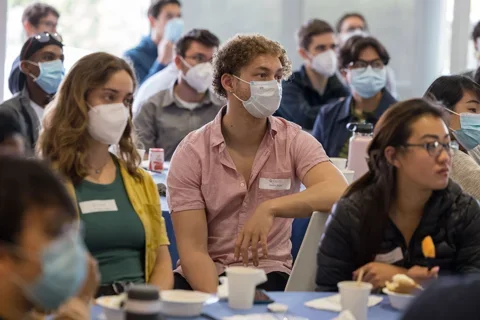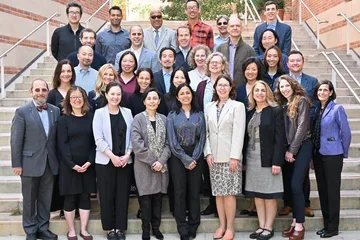Pursuing an MD and PhD in a Dual Degree Program
A UCLA Student's Perspective

A Day in the Life of Parinaz Abiri, a Joint MD and PhD Student
Medical students who want to change policies, work in bioengineering, or conduct groundbreaking research can find fulfilling opportunities in a joint Doctorate of Medicine and of Philosophy (MD and PhD) program, such as the UCLA/Caltech Medical Science Training Program (MSTP). The MSTP prepares students for leadership roles in the biomedical and sociomedical sciences.
After completing the first two years of medical school at the David Geffen School of Medicine at UCLA, MSTP students spend three to five years at either UCLA or the California Institute of Technology, working towards PhDs in biomedical research, engineering or related fields. After that, students complete the third and fourth years of medical school.
Dual Degrees, Dual Perspectives
Parinaz Abiri discusses her experience pursuing an MD/PhD.
"The two degrees are so complementary," she explains. "One involves design and discovery; the other involves the practice and application of that work."
Parinaz remembers when she first felt truly passionate about choosing to pursue both degrees. "I met a young cystic fibrosis patient and his parents," she recalls. "Seeing the challenges a family like that faces provides a far greater incentive to go back to the lab and try to do something than just looking at data or reading about a disease."

Parinaz's work on biomedical devices benefits from the dual perspectives of engineer and physician.
"I already feel the strength of having both the perspective of a physician and that of an engineer when it comes to developing the right devices for the right groups of people," she says. "First-hand clinical experience helps me better understand current needs for patient care. With the right research and development that care can hopefully extend to improve thousands of lives."
Challenges and Opportunities
Parinaz says it can be challenging to embrace the two different styles of thinking needed to be a physician scientist.
"The human body is amazingly complex; most of it, we still can't understand or predict," she says. "Medicine requires a detailed understanding of this system and the ability to make on-the-spot, life-and-death decisions based on limited information. With a PhD, we learn how to innovate and problem-solve. The process is more measured, gradual, experiment-based and deeply thought out. Sometimes the two ways of thinking can clash."
However, the challenges physician scientists face also enhance their work. "The problem-solving skills we develop with PhD training help us gain a better perspective when diagnosing patients," she says. "And the improvised decision-making in medicine can help introduce new ideas into research projects."
Insights for Future Students
Parinaz recommends students get advice from both peers and faculty mentors before pursuing an MSTP. "Students can tell you what the training process is like, but mentors help you figure out what the end of the tunnel looks like," she says. "You can see the outcome of the MD/PhD route in their different career paths and ultimately decide if it's right for you."
Her best advice for future MSTP students: "Don't worry about how long it takes or how hard it might be. Life is long enough that a few extra years of school won't make a difference, but it's also short enough that you should do what you enjoy and make the greatest impact on this world."
(Related Article: Dual Degrees for Future Physicians)



